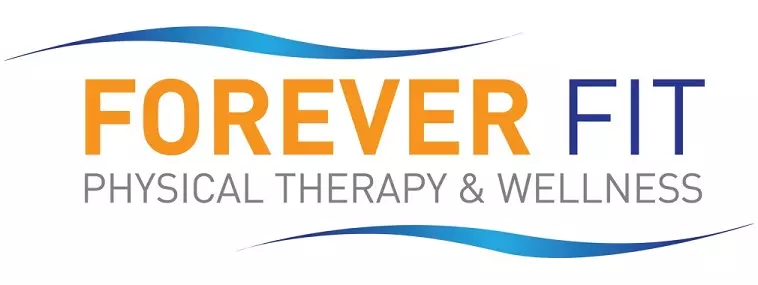Cortisone shots, also known as corticosteroid injections, are commonly used to alleviate inflammation, pain and discomfort caused by a variety of conditions. These injections can provide you with relief; however, it’s essential to exercise caution after your injection. One specific activity that health care providers often advise against is swimming.
Why you should avoid swimming after a cortisone shot
Cortisone is a potent anti-inflammatory medication. Cortisone injections are used to directly target an affected area. They are intended to help reduce inflammation and swelling, ease pain, and improve your mobility. Despite their benefits, these injections do come with risks, especially when combined with certain activities like swimming.
- Risk of infection — After your cortisone injection, the site becomes vulnerable to infections. Swimming pools, hot tubs and other aquatic environments, even if they are well maintained, can harbor bacteria. Bacteria can pose an infection risk. Infections can compromise the effectiveness of the cortisone shot and also pose a significant health risk.
- Delayed healing — Cortisone suppresses your immune response, which is your body’s natural ability to fight infections. Activities like swimming can introduce contaminants into the injection site. These contaminants can delay your healing and prolong your discomfort.
- Risk of displacement — Swimming involves various movements that could disperse the injected cortisone instead of remaining where it’s needed. This dispersal would reduce its effectiveness and diminish the pain relief it can provide.
- Chemical irritation — Chlorine and other chemical additives in swimming pools or other aquatic environments can irritate your injection site. This irritation can make pain and discomfort worse.
To help ensure that your cortisone shot is the most effective, it’s essential to follow precautions and aftercare including:
- Rest and limit your activity — Resting the affected area that was injected is crucial. You should avoid strenuous activities, including swimming. Resting allows the cortisone to work effectively without any interference.
- Maintain hygiene — Keep your injection site clean and dry to help prevent infections. You should regularly inspect the site for signs of infection. Be sure to follow aftercare instructions closely. If you notice signs of infection including redness, swelling or discharge, seek medical care quickly.
- Consult your health care provider — You should always follow your health care provider’s advice. They can provide you with personalized guidance based on your condition and health.
- Gradually return to activities — Once you have a green light of approval, slowly reintroduce activities, including swimming. Make sure you keep an eye on your body’s response. Notify your health care provider if you have any increased discomfort or you begin to see signs of infection.
- Attend follow-up appointments — If you have follow-up appointments, be sure to attend them to monitor your progress. Your progress may require adjustments to your treatment plan.
Cortisone injections can provide you with pain relief, but it’s vital to follow precautions for safety. Avoiding swimming so that your cortisone injection will be the most effective is worth the wait.
Conditions that can benefit from a cortisone shot
Cortisone shots can be a common treatment for a variety of inflammatory or painful conditions including:
- Arthritis — Cortisone shots can be beneficial in helping to manage symptoms of osteoarthritis and rheumatoid arthritis. For osteoarthritis, it can help reduce inflammation and pain and help improve joint function. For rheumatoid arthritis, it can help alleviate joint swelling and discomfort.
- Bursitis — Bursitis is caused by the inflammation of the bursae, which are small, fluid-filled sacs that help to cushion and lubricate joints. They can become inflamed due to overuse or injury. Inflammation can cause painful movement. Cortisone shots can help reduce bursitis-related inflammation, ease pain, and restore mobility.
- Tendinitis — Tendinitis occurs when the tendons, thick cords that attach muscles to bones, become inflamed. This condition commonly affects the shoulder, elbow, wrist, knee and ankle. Cortisone shots directly target the inflamed tendon. This can provide you with pain relief and promote healing.
- Ligament injuries — Cortisone shots can help manage pain and inflammation associated with ligament injuries. By reducing this swelling, injured ligaments can heal more effectively.
- Plantar fasciitis — Plantar fasciitis is a common cause of heel pain. It’s caused by the inflammation of the tissue connecting the heel bone to the toes. Cortisone shots can help reduce inflammation, offering relief from pain and discomfort.
- Carpal tunnel syndrome — Carpal tunnel syndrome is the narrowing of a passageway in the wrist that puts pressure on the median nerve. A cortisone shot can help reduce pressure and relieve symptoms like numbness and tingling in the hands and fingers.
- Spinal conditions — Cortisone shots can be administered into the epidural space of the spine. This can help reduce inflammation as well as alleviate pain that is associated with conditions like herniated discs or spinal stenosis.
While a cortisone shot can provide you with effective pain relief for a variety of conditions, it’s essential to consult with a health care provider or specialist before receiving this treatment. Once you have received the injection, be sure to follow any medical advice and avoid going swimming or doing other exercises to help protect your injection site.
Forever Fit Physical Therapy & Wellness can help you find pain relief
Forever Fit Physical Therapy & Wellness makes your well-being our top priority. We believe in providing our clients with comprehensive guidance during your recovery journey. After receiving a cortisone shot, it’s essential to be mindful of activities that can impact your healing process. Swimming is an activity that could introduce potential risks, including a risk of infection, delay in healing, dispersal of the injected cortisone, or a chemical irritation due to pool additives. By avoiding swimming after a cortisone shot, you can help minimize your risks and ensure a smoother and more effective recovery.
Contact our team today for more information or to schedule an initial appointment.

